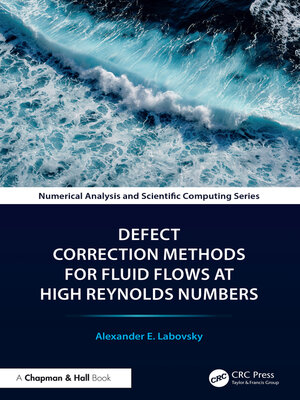Defect Correction Methods for Fluid Flows at High Reynolds Numbers
ebook ∣ Chapman & Hall/CRC Numerical Analysis and Scientific Computing Series
By Alexander E. Labovsky

Sign up to save your library
With an OverDrive account, you can save your favorite libraries for at-a-glance information about availability. Find out more about OverDrive accounts.
Find this title in Libby, the library reading app by OverDrive.



Search for a digital library with this title
Title found at these libraries:
| Library Name | Distance |
|---|---|
| Loading... |
Defect Correction Methods for Fluid Flows at High Reynold's Numbers presents the mathematical development of defect correction methods (DCM) in application to fluid flow problems in various settings. We will show several approaches to applying the DCM ideas in computational fluid dynamics (CFD) – from a basic idea of controlling the flow by the means of increased diffusion, to the state-of-the-art family of novel, DCM-based turbulence models. The main idea of the methods presented in this book, is to use defect correction in turbulence modelling; additionally, several methods will also be presented, that aim at reducing the time discretization error.
Features
· Provides a road map, starting from the ideas of minimally invasive controlling of turbulent flows, to the ways of improving the existing regularization techniques with DCM, to the ideas of 'full defect correction' in both space and time and, finally, to the more complex embedding of the DCM into turbulence modelling by the 'correction' of the whole turbulence model
· Can be used for teaching a topics course on a Masters or Ph.D. level. It is even more suitable as a reference for CFD theorists and practitioners, with most of the methods being minimally invasive and, therefore, easy to implement in the existing/legacy codes
· Discusses the current challenges in turbulence modelling with defect correction, showing several possible directions for future developments. Two source codes are provided – one for a regularization technique and another for a novel turbulence model – in order to give an interested researcher a quick start to the topic of DCM in CFD.







